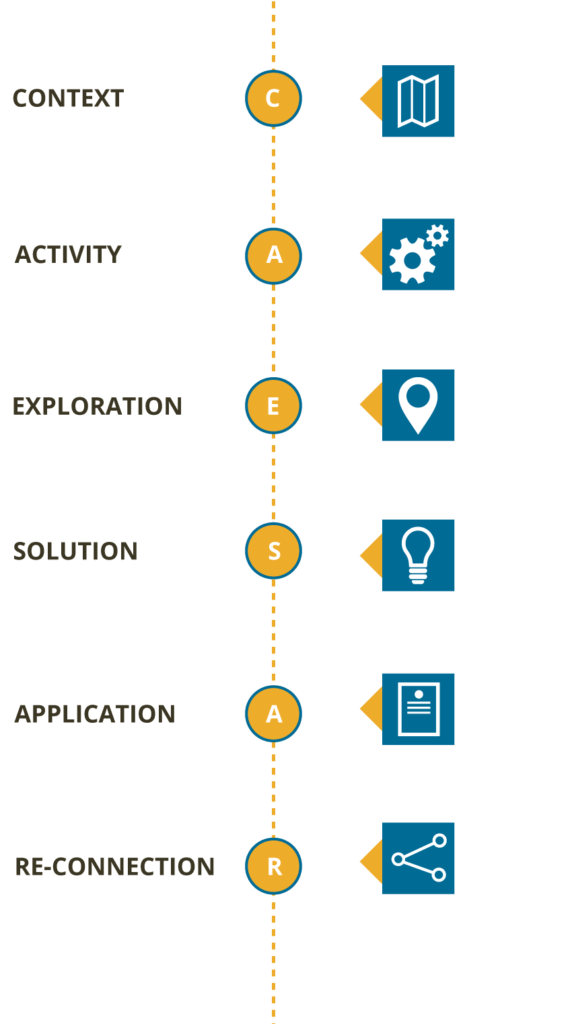Das Thema E-Learning ist in vielen Unternehmen immer noch im Wesentlichen eine „Pflichtveranstaltung“ für Compliance-Trainings zur Schulung von gesetzlichen Vorgaben oder Verhaltensregeln. Ein kreatives E-Learning-Konzept sorgt für die gewünschte Lernbegeisterung.
Dabei liegt ein großes Potenzial in der digitalen Vermittlung von anwendungsbezogenen Fertigkeiten, die auf die Unternehmensstrategie und -ziele einzahlen. Die Vorteile von E-Learning in der Erwachsenenbildung gegenüber traditionellen Lernformen wurden bereits vielfach fundiert aufgezeigt und bestätigt. Dies gilt es im Rahmen der E-Learning-Beratung zu berücksichtigen und bestmöglich in die nächsten Projektphasen einfließen zu lassen.
Der Erfolg digitaler Lernaktivitäten hängt jedoch stark von der Qualität der Implementation der einzelnen Lernprozesse ab. Wird die Konzeption der digitalen Lernerlebnisse didaktisch unausgereift oder an der ZielgruppeZielgruppe im Bildungsbereich: Gruppe von Personen mit gemeinsamen Merkmalen, für die Bil… Mehr vorbei entwickelt, missglückt der gewünschte Wissens- und Lerntransfer des erstellten Lernkonzepts.
Mit der strategischen E-Learning-Konzeption für Unternehmensthemen unserer E-Learning-Agentur werden z.B. aus trockenen Fachthemen nachhaltige Lernerlebnisse, die Mitarbeitenden aktuelles Wissen vermitteln und zu motivierenden Erfolgserlebnissen führen.
Sie möchten mit unternehmensspezifischen Themen und intelligenten E-Learnings Wissen vermitteln, bestimmte Fähigkeiten nachhaltig trainieren und Kenntnisse weiter festigen? Dann können wir Ihnen schon hier ein gutes Stück weiterhelfen – mit dem didaktischen Konzeptleitfaden namens CAESAR.

Machen Sie von Anfang an den Lebens-, Arbeits- oder Anwendungskontext klar und nehmen Sie immer wieder konsequent darauf Bezug.
Wenn der Kontext klar ist, geht es darum, die Lernenden mit einer Aufgaben- oder Problemstellung zu aktivieren, die es mithilfe des Lernmoduls zu lösen gilt.
Die Lernenden werden angeleitet, Handlungsoptionen zu explorieren. Durch direktes FeedbackFeedback ist eine unmittelbare Rückmeldung, die Lernenden hilft, ihren Lernfortschritt zu… Mehr werden Konsequenzen und unterschiedliche Handlungsweisen erfahrbar.
Zur Lösung der Probleme ist Fachwissen notwendig. Dies wird konkret und handlungsbezogen als einzelne, aufeinander aufbauende „Fertigkeiten“ vermittelt.
Die Lernenden wenden die Fertigkeiten an mehreren Anwendungsbeispielen an. Sie sollten aber nicht „übertrainiert“ werden.
Neues Wissen wird erst in der Anbindung an das bestehende Vorwissen abrufbar. Deshalb werden neu erworbenen Fertigkeiten an das bestehende angebunden.
Nehmen wir an, das Lernziel einer Produktschulung lautet „Vertriebs- und Servicemitarbeitende sollen die Vorteile des Produktes Fachhändlern erklären und demonstrieren können“. Um dieses Lernziel zu erreichen, ist mehr als das reine Produktwissen notwendig. Vielmehr muss das Training Kommunikations- und Problemlösungsfähigkeiten vermitteln.

Aber ist die Vermittlung solcher Kommunikations- und Problemlösungsfähigkeiten in einem E-Learning überhaupt möglich?
Ja, die Vermittlung von Kommunikations- und Problemlösungsfähigkeiten in einem E-Learning ist möglich! Eine Studie von Aslan aus dem Jahre 2021 liefert Beweise dafür, dass E-Learning-Kurse, die auf problemorientiertem Lernen (PBL) basieren, die Entwicklung von Kommunikations- und Problemlösungsfähigkeiten fördern können.
Bevor die Produktion der Lernmodule beginnt, ist es essenziell, die Ausgangsmaterialien sorgfältig zu prüfen und auf dieser Grundlage ein detailliertes StoryboardEin Storyboard ist ein visueller Plan für E-Learning-Kurse, der Inhalte, Struktur & Inter… Mehr zu entwickeln. Dieses Storyboard wird dann von der jeweiligen Fachabteilung überprüft und freigegeben, um sicherzustellen, dass alle erforderlichen Inhalte und Lernziele berücksichtigt werden. Erst danach wird mit dem gewählten AutorentoolEin Autorentool ist ein Softwareprogramm, welches die Erstellung von E-Learning-Kursen mit… Mehr – beispielsweise aus unserem Autorentoolvergleich – das E-Learning-Modul professionell und effizient erstellt.
In der täglichen Praxis zeigt sich, dass die Konzeption von E-Learning-Lösungen je nach Zielgruppe, Kompetenzniveau und den individuellen Rahmenbedingungen deutlich komplexer gestaltet ist. Deswegen vertrauen zahlreiche renommierte Kunden auf unser fundiertes Fachwissen als führende Experten im Bereich E-Learning-Konzepte. Wir unterstützen unsere Kunden umfassend bei der Beratung, Konzeption, Erstellung und Lokalisierung ihrer LerninhalteLerninhalte sind die Grundlage für Wissen und Kompetenzen, die in Bildungskontexten benö… Mehr. Die Auslagerung dieser entscheidenden Phase im E-Learning-Projektmanagement ermöglicht es Ihnen, Zeit zu sparen, Ressourcen effizient einzusetzen und dem Druck der Fertigstellung gelassen entgegenzutreten.
Wann immer Sie sich professionelle Beratung oder auch Unterstützung bei der Umsetzung wünschen – wir sind für Sie da.
Sprechen Sie uns gerne an!
